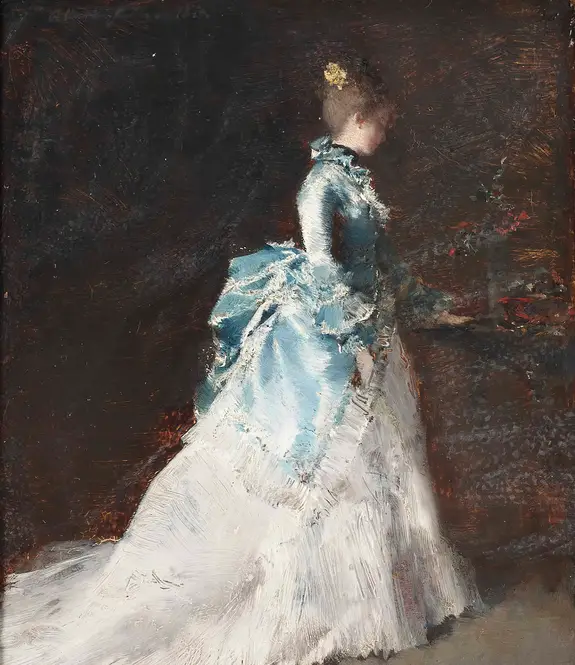Albert von Keller
Albert von Keller (1844–1920), German, Emerging from the late 19th-century Symbolist movement, this Swiss-born painter wove mysticism and psychological depth into his canvases, blending the ethereal with the unsettling. His work often explored the occult, spiritualism, and the subconscious, reflecting a fascination with the unseen forces shaping human existence. Figures draped in diaphanous fabrics or caught in trance-like states recur in his compositions, rendered with a delicate yet eerie luminosity. Though less celebrated than contemporaries like Gustav Klimt or Odilon Redon, his contributions to Symbolism were distinctive—particularly his ability to merge technical precision with dreamlike ambiguity.
Influenced by the Munich Secession, he defied strict categorization, oscillating between realism and abstraction. Portraits of society women, infused with an otherworldly glow, sat alongside darker, more introspective pieces depicting séances or mythological scenes. Critics sometimes dismissed his themes as esoteric, but his mastery of light and texture lent his work an undeniable magnetism. Later years saw a shift toward religious motifs, though always filtered through his signature ambiguity. Today, his legacy endures in niche circles, a testament to art’s power to probe the liminal spaces between reality and the sublime.
Influenced by the Munich Secession, he defied strict categorization, oscillating between realism and abstraction. Portraits of society women, infused with an otherworldly glow, sat alongside darker, more introspective pieces depicting séances or mythological scenes. Critics sometimes dismissed his themes as esoteric, but his mastery of light and texture lent his work an undeniable magnetism. Later years saw a shift toward religious motifs, though always filtered through his signature ambiguity. Today, his legacy endures in niche circles, a testament to art’s power to probe the liminal spaces between reality and the sublime.
-

Flower arranging in an interior
Albert von Keller (German, 1844–1920)A luminous portrayal of a figure immersed in arranging flowers, where light and shadow weave a quiet, contemplative moment.
